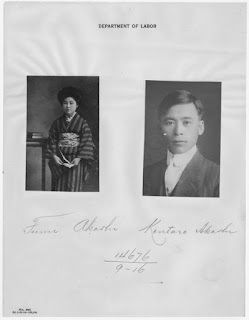By Pkisme (Template:Pkisme) via Wikimedia Commons
"Grave of the Fireflies," a film by Isao Takahata, 1988.
A little late, but this review is dedicated in remembrance of December 7th, the 74th Anniversary of the Imperial Japanese attack on Pearl Harbor. I chanced upon this Studio Ghibli gem in 2005 while studying abroad in Tokyo, Japan. I had had a rough day, and wanted a film to ease my uneasiness. This was definitely NOT a feel-good film, and I should have watched director Isao Takahata's other work, My Neighbors the Yamadas. Having said that, I do not regret the chance viewing. This film depicts the struggle of the everyday people to survive during war. The story revolves around a brother and sister in World War II Kobe, during the American firebombing campaigns. While not originally intended as an anti-war film, in North America the graphic nature and drama of this film inspired this kind of take-away message.
In my opinion, this is probably Studio Ghibli's most serious and painful film. Based on Akiyuki Nosaka's semi-autobiographical story of the same name, Hotaru no Haka or "Grave of the Fireflies" showcases the quality we've come to expect from Studio Ghibli. The voice acting, as viewed in Japanese, captures the innocence of childhood under extreme stress. I feel like it captures a realism that is almost unavailable with real actors, although the sheer weightiness and tragedy of the narrative reminds me of Osama, Siddiq Barmak's 2003 film about post-Taliban Afghanistan. The art style is classic Studio Ghibli, and fans will recognize the hues and color coordination of Michiyo Yasuda, although innovative use of color made this film remarkable for its softer palette, given the plot.
Reminiscent of Sir Richard Attenborough's 1982 Ghandi, audiences are immediately given the fate of the main characters. This does not detract from the film, but sets the stage for the unfolding narrative. Ninth-grader Seita narrates his sister Setsuko and his fate just after the unconditional surrender of Japan to the Allies during World War II. He is dressed in a nice school uniform as his sister recovers a Sakuma Drops tin, tossed by a janitor into a garbage field near Sannomiya Station. The film then moves back in time, as Seita and Setsuko rush to secure a few belongings before heading to the bomb shelter with their ill mother.
I believe the significance of this film is not who was to blame for the war. In my viewing, I see the often silent tragedy of warfare is the real human cost to the civilians caught in a conflict. We see this now with the ongoing conflicts in the Middle East, just as the Japanese Americans confinement after Pearl Harbor, to the enslavement and torture of East Asian and Southeast Asian guerrilla fighters and civilians to fuel the Japanese war machine in World War II. While it is clear the Allies are bombing Kobe, there is no American person shown in the film. Instead, in true Studio Ghibli style, the film focuses on the challenges of two children, trying to survive in wartime. Among many themes, we as viewers are introduced to the selfishness of family and neighbors during times of scarcity. We see the real cost of war is not only on the battlefield, although a terrible venue, but in the homes and minds of the people whose military and politicians are competing for world domination. Further, I feel this kind of film illustrates the important difference between civilians of an enemy nation and an enemy combatant. A distinction often ignored in many popular conceptions of wartime history.
This is not a film to watch casually while doing household chores. Frankly, I have a hard time actually recommending this film for entertainment, but it is necessary that any student of history, patriot, politician and educator see it. A truly educational, informative and heartbreaking look into the realities of war. In the United States, the anti-war message is a strong current, however the original Japanese version, and vision from Isao Takahata's direction, had a message of what can happen when hopelessness overcomes the will to survive, and the failure of family and the failure to survive in the face of hardship. Either way, this film commands an hour and a half of the viewer's undivided attention. Your eyes will be opened, if a little moist.
Purchase "Grave of the Fireflies" on Amazon.


















